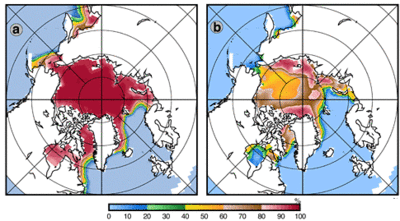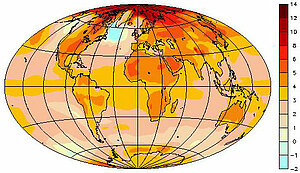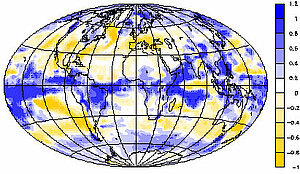Long-term climate prediction
How far sea level will vary in the future is a vital question that is closely linked to climate change. Long-term climate prediction models are now being developed to provide answers. These models, imperfect tools but proven, create a numerical replica to reflect the essential characteristics of our planet.
A regular summary of this work is carried out at international level by the IPCC. Initial reports in 1990, 1995 and 2001 and finally 2007, all agree on global warming attributable to human activities, and on the acceleration of this process over the past decade. In 2007, in the 4th IPCC report, the models predict that by 2100, the mean sea level will be higher than today from about 28 to 43 cm. Despite uncertainties quantitative results, the models are consistent and today better integrate the oceans (thanks to the contribution of satellite altimetry and circulation of deep currents), the physics and chemistry of the atmosphere, hydrology and vegetation.
The response of the climate system is not uniform at gliobal scale. Areas in northern hemisphere and the Arctic regions are warming fastly than the global average. Southern hemisphere is warming more slowly, and there is practically no change in the regions of the Circumpolar Current. There is a slightly colder area in North Atlantic, coming from a change in ocean circulation (decrease in hot water transport from the equator). Regarding precipitation, we can note an increase in tropical regions and aridification more pronounced in subtropical and mediterranean areas.







